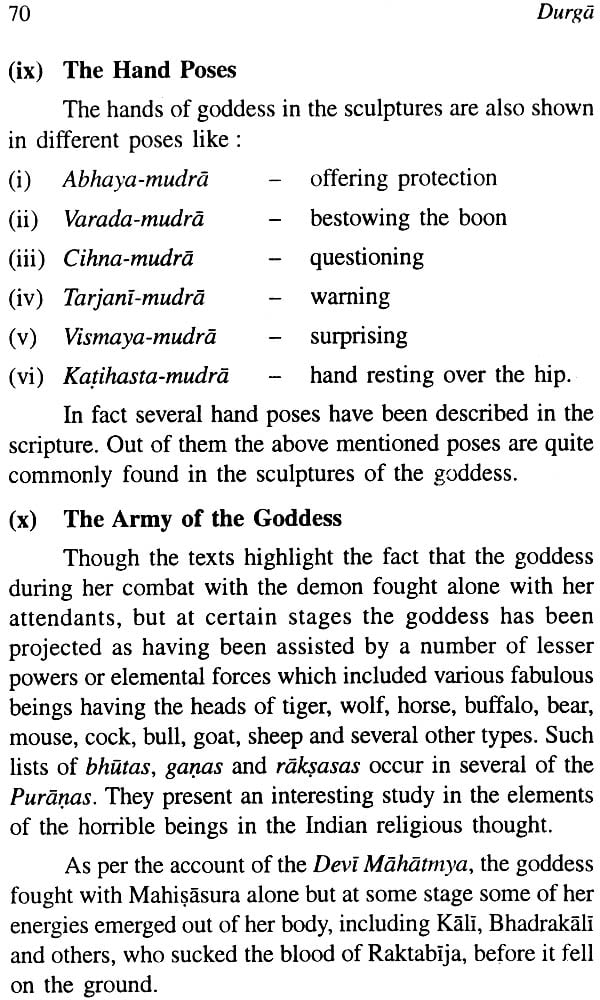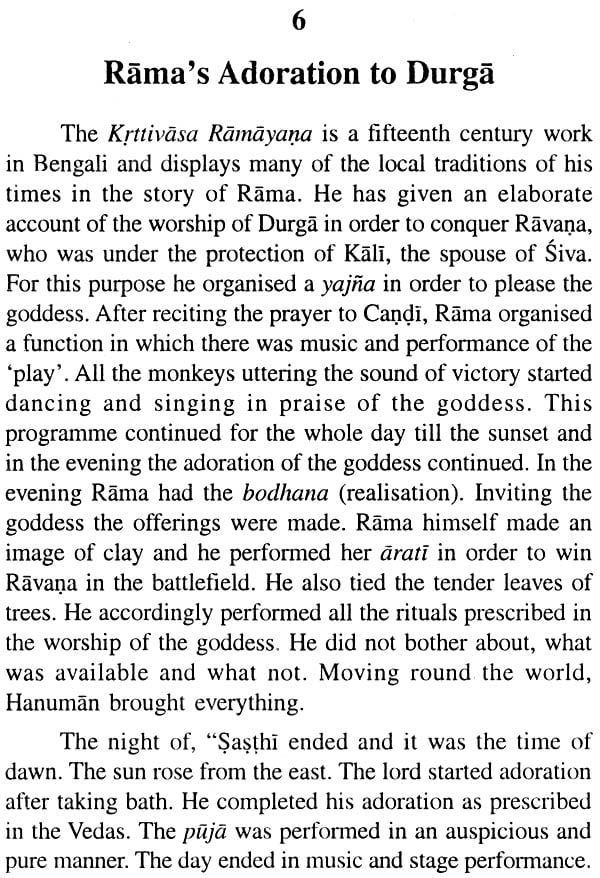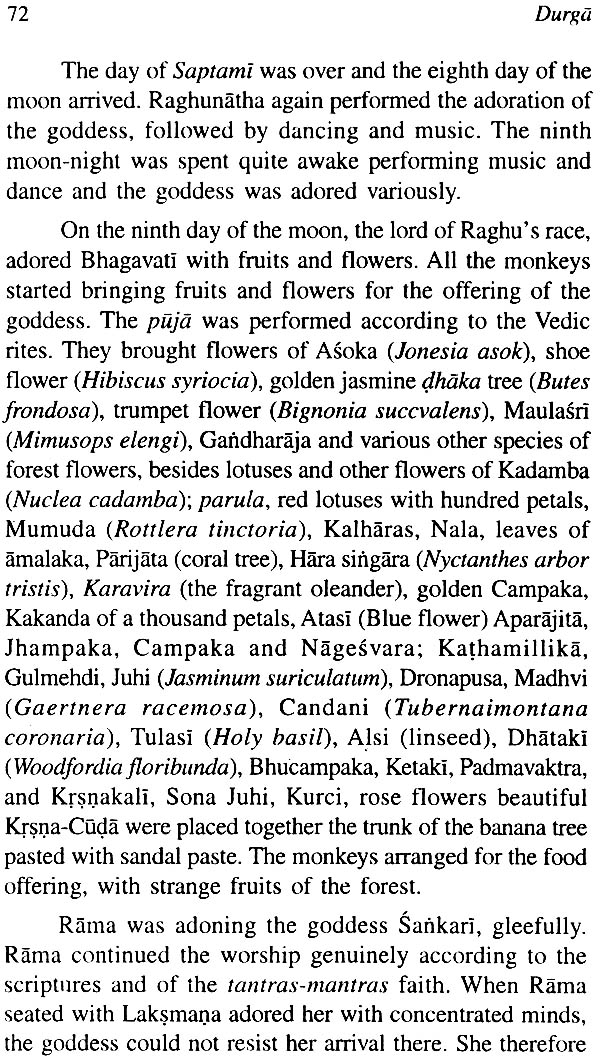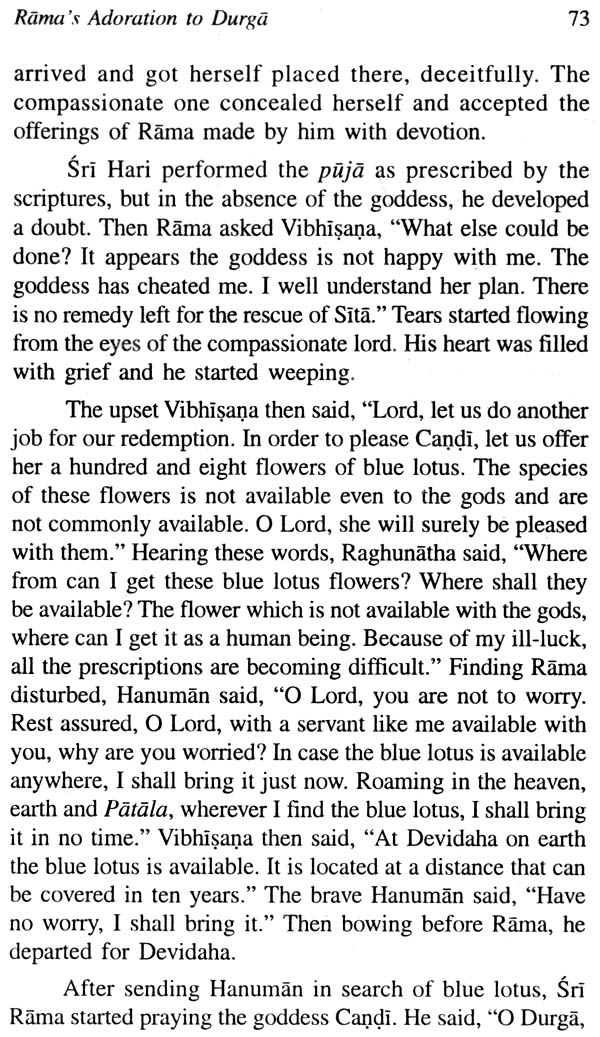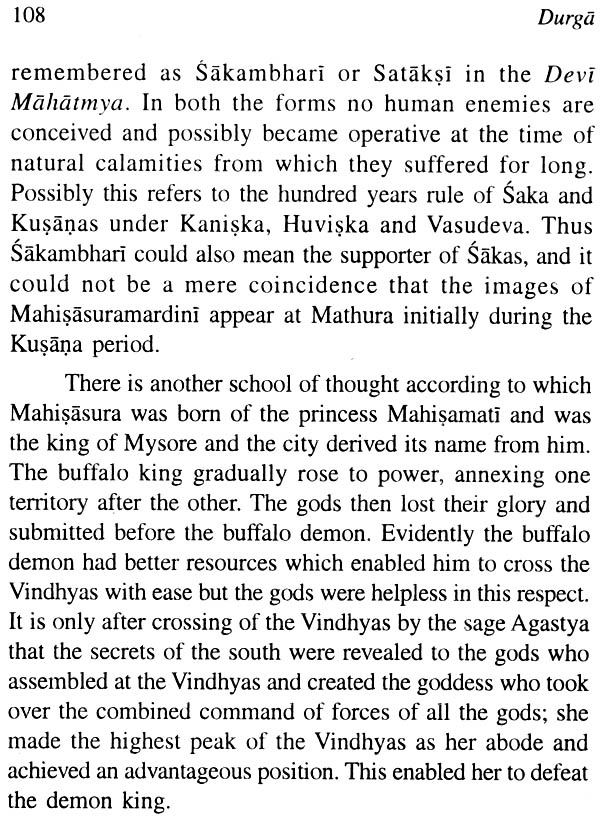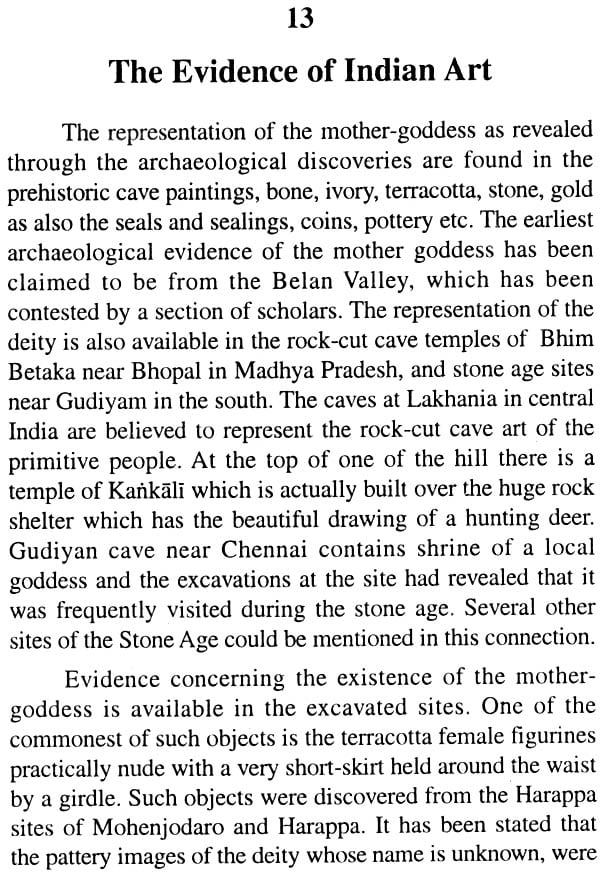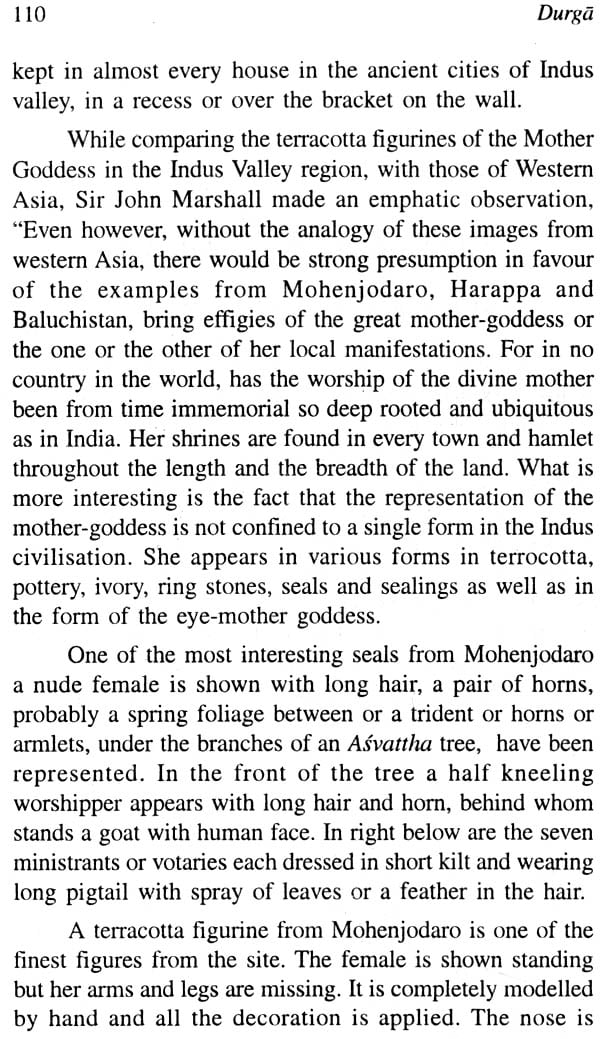
Durga (The Great Goddess)
Book Specification
| Item Code: | IDJ884 |
| Author: | Shantilal Nagar |
| Publisher: | B.R. Publishing Corporation |
| Language: | English |
| Edition: | 2012 |
| ISBN: | 9789350500033 |
| Pages: | 139 |
| Cover: | Hardcover |
| Other Details | 8.5" X 5.5" |
| Weight | 290 gm |
Book Description
About the Book
Durga is the most important Goddess of the Hindu faith and is treated to the Spouse of Siva. She is adored in the Indian religious thought from the time immemorial. In some of the epics, even Sita is said to have adored her, before her marriage with Rama. She indeed is the Goddess of Chastity of the chaste women. She is adored by the people individually as well as with lord Siva.
About the Author
Shantilal Nagar, a graduate of the Punjab University, served in the curatorial capacity in the Central Asian Antiquities Museum, New Delhi, the Archaeological Museum, Nalanda, and Archaeological Section of the Indian Museum, Calcutta for a number of years. He has to his credit the scientific documentation of over fifty thousand antiquities, in these museums, representing the rich cultural heritage of the country and comprising of sculptures, bronzes, terracotta, beads, seal and sealing, ancient Indian numismatics, wood work, miniatures and paintings, textiles and Pearce collection of gems, ranging from the earliest times to the late medieval period. He was awarded, in 1987, a fellowship, for his monograph on the temples of Himachal Pradesh, by the Indian Council of Historical Research, New Delhi. He has authored more than fifty books.
| 1. | Introduction | 1-15 |
| (i) Philosophical Aspect, (ii) Hara-Siddhi, (iii) Rudramsa-Durga, (iv) Vana-Durga, (v) Agni-Durga, (vi) Jaya-Durga, (vii) Vindhyavasini-Durga, (viii) Ripumari-Durga, (ix) Yoganidra, (x) The Earth Mother, (xi) Katyayani, (xii) Sakti. | ||
| 2. | Nava-Durgas | 16-23 |
| (1) Nava-Durga of the Skandayamala Tantra, (2) Nava-Durga of the Devimahatamya- (i) Sailaputri (Mahesvari), (ii) Brahmacarini (Brahmani), (iii) Skandamata (Parvati), (iv) Katyayani, (v) Kalaratri, (vi) Maha-Gauri (Parvati), (vii) Candraghanta, (viii) Kusmanda, (ix) Siddhidatri. | ||
| 3. | Uma-Haimavati (Druga) | 24-39 |
| 4. | The Sages connected with Mahisasuramardani | 40-44 |
| (i) Contribution of the Sages - (a) Medha, (b) Katyayana, (c) Agastya, (d) Markandeya. | ||
| 5. | Devi-Mahatmya | 45-70 |
| (i) The Killer of Sumbha and Nisumbha, Projected in Art, (ii) The Forms in Indian Art, (iii) The Arms - (a) Two-armed (b) Four-armed, (c) Six-armed, (d) Eight-armed, (e) Ten-armed, (f) Twelve-armed, (g) Sixteen-armed, (h) Eighteeen-armed, (i) Twenty-armed (j) Thirty-tow armed, (k) Thousand-armed, (l) Forest of arms;(iv) The Ornaments, (v) The Attributes, (vi) The Postures, (vii) The Vehicle, (viii) The Crown, (ix) The Hand poses, | ||
| 6. | Rama's Adoration to Durga | 71-80 |
| 7. | Ravana's Worship to Ambika | 81-84 |
| 8. | Mahisasura | 85-91 |
| (i) The Birth, (ii) The Messanger, (iii) The Greta Vow, (iv) Diplomatic Excellence, (v) Emergency Meeting, (vi) Preparation for the Battle, (vii) Troops Band, (viii) The Battlefield, (ix) The Battle Scene, (x) End of the Buffalo Demon. | ||
| 9. | The Saktipithas | 92-96 |
| 10. | The Mother Goddess | 97-103 |
| 11. | Worship of Durga in Ancient Times | 104-105 |
| 12. | The Historical Background | 106-108 |
| 13. | The Evidence of Indian Art | 109-111 |
| 14. | Method of Adoration of Durga | 112-139 |
